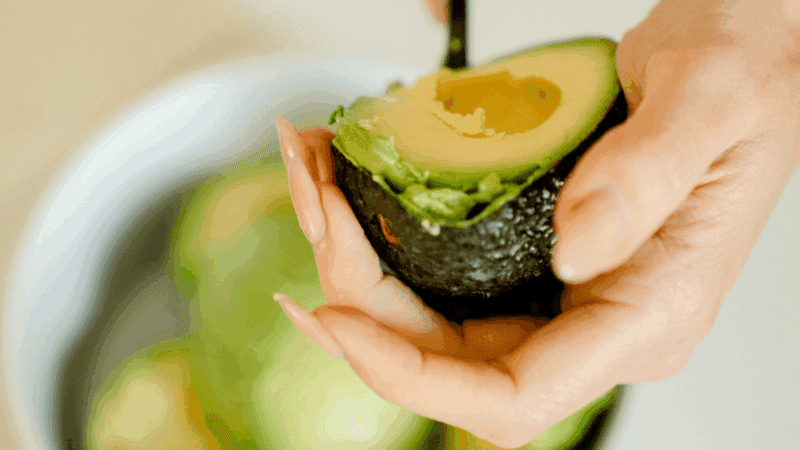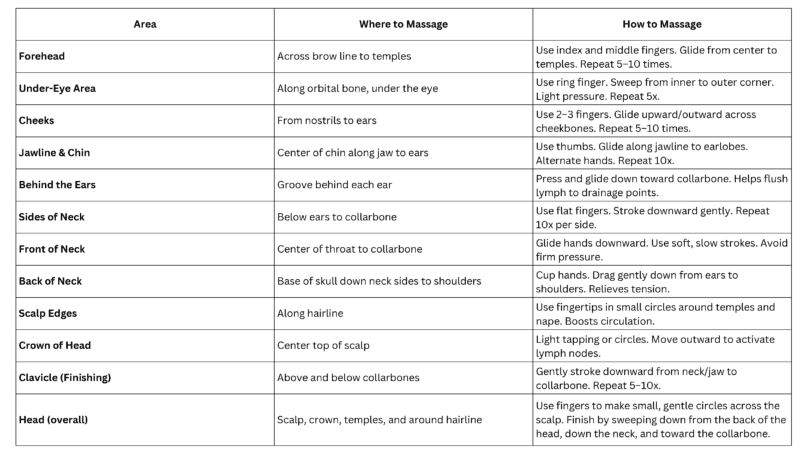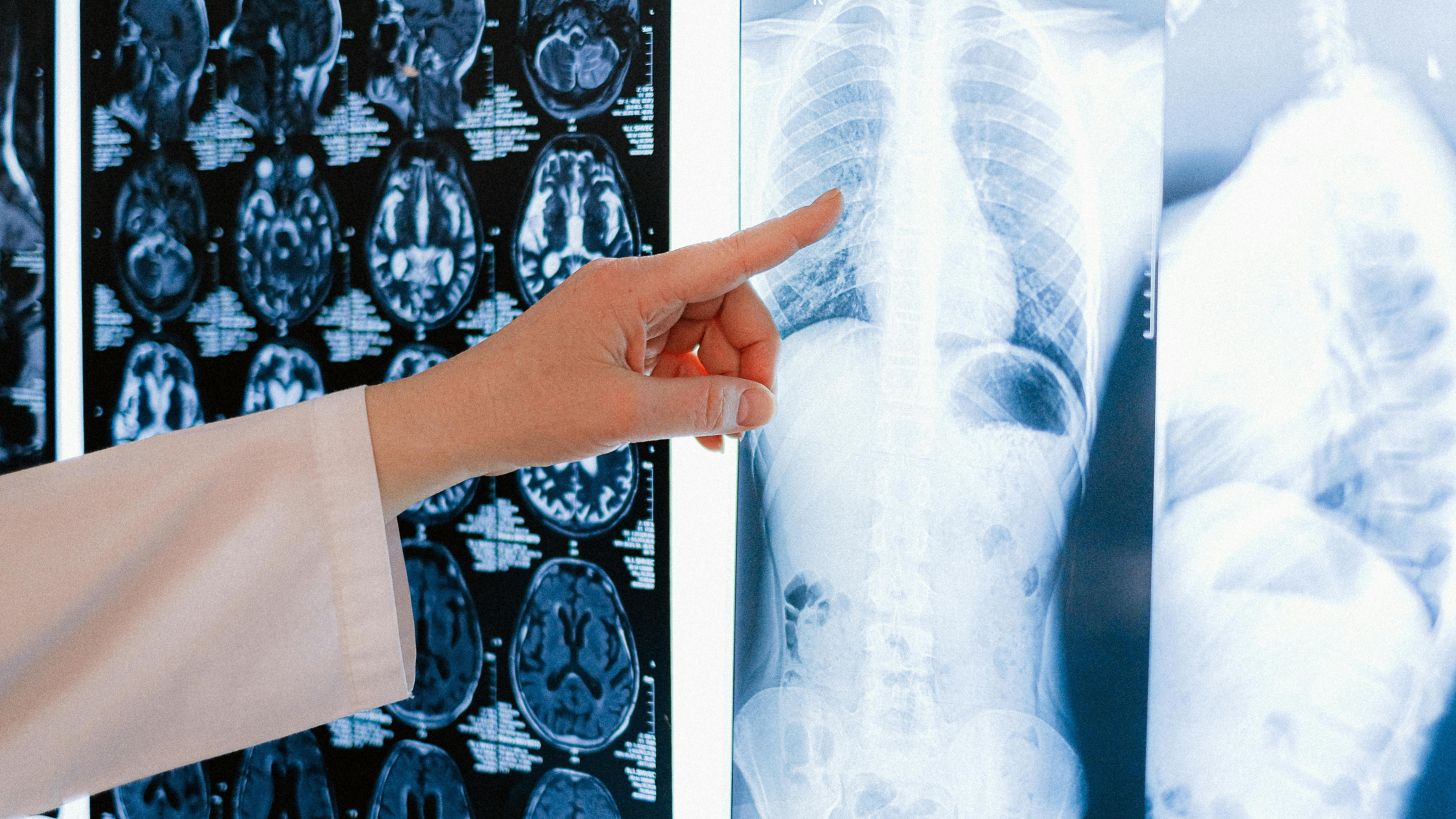Key Takeaways
- A holistic biohacking routine supports brain health by enhancing energy, detox, circulation, and cognitive clarity.
- Natural NAD precursors (NMN, NR) and niacin-rich plants boost mitochondrial function and reduce brain inflammation.
- Practices like intermittent fasting, cold exposure, breathwork, lymphatic self-massage, and dietary fiber help mimic advanced therapies for optimized cognitive function.
Alternative Protocols You Can Do at Home
In the past 20 years of practice, I’ve been learning and discovering the best tools, therapies and techniques for healing. I’m always interested in sharing my knowledge about how you can help yourself. Lately, I’ve paid special attention to improving brain health, discovering strategies for optimizing cognitive function, energy and clarity that blend science-backed interventions and daily self-care. Here are some interventions that are key to keeping your brain in shape and don’t require a lifestyle makeover.
NAD: The Cell’s Spark Plug
Everything that we do relies on NAD (nicotinamide adenine dinucleotide), a compound that is found in every cell of our bodies. It enables the transfer of energy from the food we eat to the mitochondria, which converts it to cellular energy. As an essential regulator of metabolism, NAD contributes to our energy levels, our fitness, our circadian rhythms, and our bodies’ ability to perform cellular repairs (1).
As much as we need this compound for everything we do, from breathing to thinking, our bodies don’t produce an endless supply. We actually lose as much as 50% of our NAD levels between the ages of 40 and 60 (2). NAD also plays a crucial role in brain energy, mitochondrial health, and DNA repair. This is why longevity clinics now offer intravenous NAD sessions, which generally cost hundreds of dollars per session.
To boost NAD naturally, I recommend you ask your healthcare provider about niacinamide (NM) or nicotinamide riboside (NMN) supplements, which are precursors to NAD and promote the body’s production of it.
We don’t absorb NAD directly from food. Our bodies can produce it from specific nutrients found in whole foods. NAD precursors NMN and NR are naturally present in many plant-based ingredients. Broccoli and green beans are especially rich in NMN, with some varieties providing over 13,000 µg per 100 grams. Beetroot, cucumber peel, spinach, carrots, scallions, and collard greens are also important sources. You can find NR in wild chicory, bananas, oranges, avocados, leeks, cilantro, and purple taro.
Niacin-rich foods like mushrooms, sunflower seeds, peanut butter, brown rice, sweet potatoes, oats, quinoa, and green peas also support NAD production. Tryptophan, an amino acid that converts into niacin, is found in pumpkin seeds, lentils, tofu, tempeh, chickpeas, almonds, and cashews. Fermented foods such as kimchi, sauerkraut, miso, and kombucha help by supporting gut health, which plays a critical role in absorbing and employing these NAD precursors. Including a gastrointestinal health supplement can further enhance the gut’s ability to utilize these nutrients effectively. Apigenin, which is found in celery, inhibits CD38, an enzyme that affects NAD production, effectively slowing down how quickly the body metabolizes it.
Remember, preparation matters. Steaming is an ideal cooking method for preserving NMN in foods like green beans and beets. NR is more heat-sensitive, so enjoying certain fruits and leafy greens raw can help maintain their potency. Ultimately, eating this rainbow of diverse, plant-forward, minimally processed foods can be one of the most effective ways to support your body’s natural NAD production.
Also, add daily movement, at least seven hours of sleep, and intermittent fasting—all of which stimulate endogenous NAD production, as well. Take a 20-minute brisk walk, or do breathwork to engage parasympathetic tone. All these things can create mild hormetic stress that stimulates your cells to produce more NAD (3).
Foods like fermented veggies, avocado, and whole grains also contain the B vitamin precursors, but supplementation is often the most efficient route. Supporting NAD this way also heightens mitochondrial function and lowers brain inflammation, which is key to long-term cognitive health.

GLP-1 Treatments Without Injections
GLP-1 medications like Ozempic and Mounjaro were designed for blood sugar control for diabetics. Their effects on brain chemistry have given healthcare professionals cause to take notice, too (4). These drugs slow gastric emptying and support reward pathways, removing the mental noise and improving focus. Happily, using pharmaceutical GLP-1 medication isn’t the only route.
A more sustainable way to support GLP-1 activity naturally starts with balancing blood sugar and stabilizing insulin. High-fiber meals, plant protein, beans, and supplements like berberine help blunt post-meal glucose spikes. Not only does this improve metabolic health, but it also supports sharper cognition, steadier mood, and reduces brain inflammation (5).
Prebiotics and probiotics also help, along with other supplements, like curcumin and ginseng.
Intermittent fasting has also been shown to support GLP-1 sensitivity, specifically time-restricted eating in a 16:8 window (6). This means limiting your meals to just an 8-hour window, say from 10am to 6pm. Research shows that fasting increases levels of brain-derived neurotrophic factor (BDNF), which is critical for memory, learning, and neural repair (7).

Lymphatic Drainage for Brain Detox
What most people don’t realize is that the brain has its own waste-clearing system called the glymphatic pathway, which primarily works at night. When drainage is poor, toxins like beta-amyloid and inflammatory cytokines accumulate, affecting cognitive decline and brain fog (8).
Luxury lymphatic facials and cranial massages are designed to enhance this drainage. But you can replicate much of that benefit with self-guided lymphatic massage: gentle strokes around the temples, behind the ears, and down the neck to stimulate flow from the brain’s drainage points. Pair this with deep nasal breathing and hydration to activate parasympathetic tone and increase lymphatic movement.
Also, use a dry brush. And just walking or bouncing on a rebounder can help. Rhythmic movement is one of the best ways to move lymph.

Hyperbaric Oxygen, Minus the Chamber
Hyperbaric oxygen therapy (HBOT) is a clinical-grade treatment that super-saturates the body with oxygen under pressure, accelerating healing, reducing inflammation, and supporting neuronal repair (9). It’s often used post-TBI or in advanced cognitive decline protocols.
While nothing truly replaces the pressure environment of a chamber, cold exposure comes surprisingly close. A minute-long cold shower or immersing your face in a bowl of ice water can trigger vasoconstriction and blood flow redirection (10), mimicking HBOT’s circulatory effects on a smaller scale. This enhances oxygen efficiency on a cellular level and amps up mitochondrial function, especially when you expose yourself to the cold consistently.
Do this with deep diaphragmatic breathing to improve nitric oxide and oxygen delivery. Inhale through your nose for four counts, hold for seven, and exhale slowly for eight. It calms the nervous system while oxygenating tissues, a simple combo that nourishes both brain and body.
Daily meditation and breathwork improves focus, stress resilience, and even structural changes in the prefrontal cortex. Just 5–10 minutes of quiet breathing each morning is enough to make a difference.

Daily Brain Health Routine
Here’s a summary of how a typical day might go…
- Morning Routine: Cold plunge (shower or bowl) + dry body brush or lymph-style self-massage.
- Midday Boost: 10 min sit, red-light session, or fresh-air breathwork.
- Mealtime: 16:8 fast, lots of fiber, cinnamon, plant-protein.
- Evening Ritual: Cranial massage at home + 10 min breathwork before bed.
- Supplementally: Niacinamide 500 mg, NAD precursor (NR or NMN), hydration.
Optimizing your brain health doesn’t need to come with a luxury price tag. You can mimic the effects of spa-grade therapies through smart, accessible interventions. You are still giving your brain exactly what it needs: circulation, detoxification, oxygenation, and energy. The best part? These rituals don’t just upgrade your mind. They reconnect you with your body, your breath, and your rhythm.
xo – Serena
Frequently Asked Questions
Q: What’s the difference between NMN and NR as NAD⁺ precursors, and is one better for brain health?
A: NMN (nicotinamide mononucleotide) and NR (nicotinamide riboside) are both precursors to NAD⁺, but they enter the pathway at slightly different points. NR is more bioavailable and often used in supplements targeting cognitive energy, while NMN may be better absorbed in tissues like the pancreas and blood vessels. For brain health specifically, some early studies suggest NR may have a slight edge due to its ability to cross the blood-brain barrier more efficiently. However, both are effective in supporting NAD⁺ and mitochondrial function.
Q: Can breathwork actually impact cognition, or is it just for stress?
A: Breathwork does far more than calm you down. Deep diaphragmatic breathing increases vagal tone, improves oxygenation to brain tissue, and boosts nitric oxide—a molecule that enhances blood flow and cognitive sharpness. Certain techniques, like alternate nostril breathing or box breathing, also help balance hemispheric activity in the brain and may support better focus and emotional regulation over time.
Q: How often should I do cold exposure for it to mimic hyperbaric oxygen benefits?
A: Consistency is key. Cold exposure stimulates the same metabolic and circulatory responses as hyperbaric therapy, but only when practiced regularly. Aim for at least 3–5 times per week, even if it’s just a 60-second cold face plunge or shower finisher. Morning exposure may offer added benefits by triggering a mild cortisol rise, which sharpens alertness and cognitive focus.
Q: What is apigenin and why does it matter for brain health and NAD?
A: Apigenin is a natural flavonoid found in celery, parsley, chamomile, and citrus peels. It has anti-inflammatory and neuroprotective properties, but its unique value lies in its ability to inhibit CD38, an enzyme that degrades NAD. By slowing CD38 activity, apigenin helps preserve your body’s NAD stores—making it a subtle but powerful ally for cognition and cellular repair.
Q: Is there a best time of day to support glymphatic drainage for the brain?
A: Yes—your brain’s glymphatic system is most active during deep sleep, particularly between 11 p.m. and 2 a.m. This is when the brain clears out waste and resets neurochemical balance. To enhance this process, wind down with breathwork, reduce screen exposure before bed, and avoid heavy meals after 7 p.m. Adding a few minutes of cranial self-massage or gentle neck stretches before sleep can further support drainage.
Q: Can movement really influence brain detox, or is that an overreach?
A: Movement is one of the most effective ways to stimulate lymphatic and glymphatic flow. The lymphatic system lacks a central pump like the heart, so it relies on muscular contractions to move fluid. Even low-impact movement can help mobilize toxins and improve overall circulation, which indirectly supports cognitive clarity and reduced brain inflammation.
CITATIONS
- Alberts B, Johnson A, Lewis J, et al. Molecular Biology of the Cell. 4th edition. New York: Garland Science; 2002. How Cells Obtain Energy from Food. Available from: https://www.ncbi.nlm.nih.gov/books/NBK26882/
- Peluso A, Damgaard MV, Mori MAS, Treebak JT. Age-Dependent Decline of NAD+-Universal Truth or Confounded Consensus? Nutrients. 2021 Dec 27;14(1):101. doi: 10.3390/nu14010101. PMID: 35010977; PMCID: PMC8747183.
- McStay M, Gabel K, Cienfuegos S, Ezpeleta M, Lin S, Varady KA. Intermittent Fasting and Sleep: A Review of Human Trials. Nutrients. 2021 Oct 1;13(10):3489. doi: 10.3390/nu13103489. PMID: 34684490; PMCID: PMC8539054.
- Olukorode JO, Orimoloye DA, Nwachukwu NO, Onwuzo CN, Oloyede PO, Fayemi T, Odunaike OS, Ayobami-Ojo PS, Divine N, Alo DJ, Alex CU. Recent Advances and Therapeutic Benefits of Glucagon-Like Peptide-1 (GLP-1) Agonists in the Management of Type 2 Diabetes and Associated Metabolic Disorders. Cureus. 2024 Oct 21;16(10):e72080. doi: 10.7759/cureus.72080. PMID: 39574978; PMCID: PMC11579408.
- Ye Y, Liu X, Wu N, Han Y, Wang J, Yu Y, Chen Q. Efficacy and Safety of Berberine Alone for Several Metabolic Disorders: A Systematic Review and Meta-Analysis of Randomized Clinical Trials. Front Pharmacol. 2021 Apr 26;12:653887. doi: 10.3389/fphar.2021.653887. PMID: 33981233; PMCID: PMC8107691.
- Dietary impact on fasting and stimulated GLP-1 secretion in different metabolic conditions – a narrative review, Huber, Hanna et al.,The American Journal of Clinical Nutrition, Volume 119, Issue 3, 599 – 627
- Physiological and psychological responses to five-day fasting. Skurvydas A, Istomina N, Dadeliene R, Valanciene D, Hendrixson V, et al. (2025) Physiological and psychological responses to five-day fasting. PLOS ONE 20(6): e0324929. https://doi.org/10.1371/journal.pone.0324929
- Da Mesquita S, Fu Z, Kipnis J. The Meningeal Lymphatic System: A New Player in Neurophysiology. Neuron. 2018 Oct 24;100(2):375-388. doi: 10.1016/j.neuron.2018.09.022. PMID: 30359603; PMCID: PMC6268162.
- Gupta M, Rathored J. Hyperbaric oxygen therapy: future prospects in regenerative therapy and anti-aging. Front Aging. 2024 May 2;5:1368982. doi: 10.3389/fragi.2024.1368982. PMID: 38757145; PMCID: PMC11097100.
- Esperland D, de Weerd L, Mercer JB. Health effects of voluntary exposure to cold water – a continuing subject of debate. Int J Circumpolar Health. 2022 Dec;81(1):2111789. doi: 10.1080/22423982.2022.2111789. PMID: 36137565; PMCID: PMC9518606.
by





